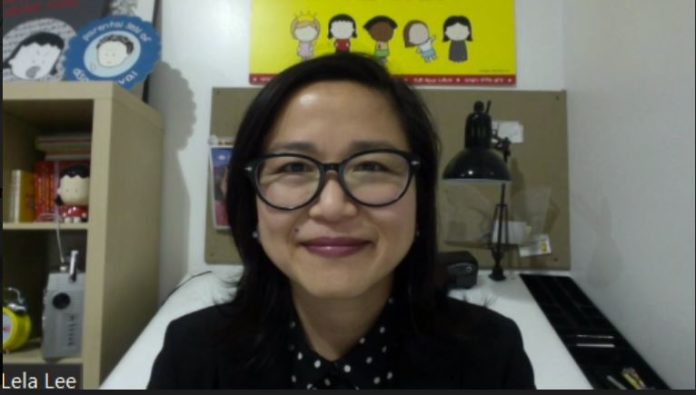
It’s no secret that stereotypes can be damaging, even when they’re disguised as compliments.
On April 21, 89 Rowan students and faculty members gathered via Zoom to listen to Lela Lee, the creator of the cartoon “Angry Little Asian Girl,” lead an important conversation about the harmful impact of the model minority myth on all minorities of America.
The model minority myth describes the stereotype that all Asians are disciplined, intelligent and wealthy. While upon first glance this myth may seem to be a positive view of Asians, this idea actually causes more harm than good.
Lee began the discussion by walking her audience through the history of Asians in America and how they went from being hated to being upheld as the “perfect immigrant.” She explained how the American attitude toward Asians has had a long history of being influenced by the World Wars and the Asian community’s relationship to other minorities in America.
She went on to explain how Asians were portrayed as a model for perseverance and hard work as a way to shame Black Americans for their constant cries for help, justice and equality. Additionally, Asians were selected as this “chosen group” due to their history of not speaking up or being particularly active in the Civil Rights Movement.
The lie that all Asians are successful causes non-Asian Americans to believe that Asian Americans are doing just fine and don’t require any help.
“Asian Americans represent 17.9% of people living in poverty in New York City,” Lee said, “…but they only received 1.4% of the total values of the city’s social service contracts… A lack of funding for Asian community organizations leads to Asian New Yorkers receiving insufficient and limited support for their social service needs.”
The model minority myth is often used in this harmful way. It minimizes and hides the hardships that Asian Americans face, and it leaves them without the vital support systems and funding they genuinely need.
Lee also spoke out about the Asian community’s tendency to want to put up a flawless front to be seen as a perfect, shameless family.
“We ourselves – our Asian parents, families [and] ourselves – need to overcome our silence and shame about our failures, perceived failures and flaws,” Lee said, “…because if we don’t speak out about our problems, we don’t actually get the funding for the social programs that are required to help us.”
She explained that the issues stemming from the community’s reluctance to discuss perceived flaws and ask for help goes beyond receiving funding for social services. Oftentimes, the decision to not openly discuss domestic issues can lead to those who need help getting out of these bad situations to being stuck there.
“Silence and shame surrounding child abuse, domestic abuse and poverty and all these things make it a double bind,” Lee explained. “If these things are silenced, then no one knows, and no one can help.”
Lee went on to note that she is hopeful and inspired by the recent increase in younger Asian populations getting involved with politics, media and social issue discussions. After years of hiding their issues from the world, the Asian community is opening up, while still respecting their Asian heritage.
In the future, Lee hopes to see Asians have a more active presence in defining their individual and collective identities.
“I think really the solution – about combatting the racial resentment that Asians experience – is we need to have accurate media representation… and really talk about the things we’re hiding,” Lee said.
She encouraged more Asians to get involved in the film and media industry and to be the ones who are able to write authentic Asian characters, not only so more Asians can have that representation, but also so non-Asians can have a better understanding of what Asian life is like behind the closed doors of their homes.
She ended her conversation with a call to action for her Asian audience, urging them to really take an active – and long overdue – role in controlling the Asian narrative.
“Asians have been called the yellow peril and the model minority, likening Asians to evil enemies or a quiet group that makes no trouble. Either way, Asians have been defined by others,” Lee said. “From this point forward, Asian Americans would like their turn defining themselves and telling others who Asians really are.”
For comments/questions about this story, email features@thewhitonline.com or tweet @TheWhitOnline.





